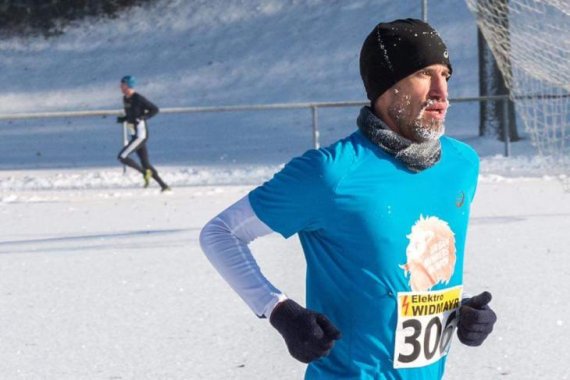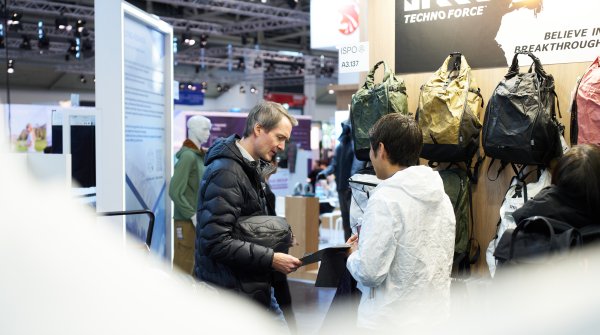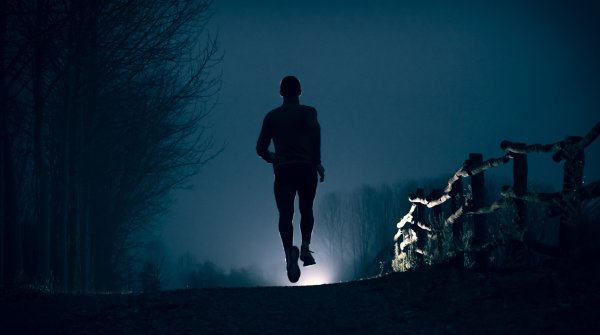
The preparation for the ISPO Munich Night Run, the new trail running event on the evening before the opening of ISPO Munich, is going into crunch mode. If you still haven’t registered, you should do so quick.
Sebastian Hallmann will be at the starting line on February 1. The seven-time German champion in middle and long-distance running (for example, over 10,000 meters) won the German run of the Wings for Life World Run in Munich in May 2017 – and is also the favorite for the ISPO Munich Night Run.
Learning from the best: As a running coach, Hallmann also offers personal training and competition prep. In the interview series on ISPO.com, the Munich native explains what the preparation for the ISPO Munich Night Run looks like. Part one was about winter training in general, while part two addressed a running plan for the quieter (holi-)days.
In part three of the interview, Hallmann now talks about interval training, tempo runs, and uphill runs – that is, the perfect preparation for the ISPO Munich Night Run.
Sebastian, the holidays are long over – how did you keep fit between Christmas and Twelfth Night?
With more laid-back runs and a bit of stabilization training.
Blessed is the one who has continued to train moderately or even intensively. But if I haven’t done anything (except for sinning and lounging around) – how should I deal with it now? Start directly from zero to one hundred and forcibly make up for as much as possible in the shortest possible time? Or resume training slowly and moderately?
Rocky-style training only works in the movies. It’s best to get back in the hang of things slowly, and increase things moderately from there. If you demand too much of your body after a longer break, you risk injury.
The crunch phase for preparing for the ISPO Munich Night Run begins NOW. Please draw up a short training plan or training focus areas for our three target groups. First: What should the occasional runner who’s hardly been training in the winter do now?
The occasional runner should leave the paved paths and head off into the countryside! No matter whether it’s deep ground, hills, or snow, the new stimulation will give the body a little shape boost once again.
Second: What about the winter runner who trains regularly but has yet to compete in a winter competition? What should his focus be?
Complete one unit or another at the speed of the competition. It’s best to do it in the form of interval training with shorter stress phases. That makes it easier to maintain control over the stress intensity.
Third: And the competitor who is extremely keen on a top time at the ISPO Munich Night Run? What should he specifically do to train?
Tempo runs in the countryside. Competitors will normally already have a plan by now. So it’s best to work on the material next to your training. The grip of your shoes especially can be decisive for the ISPO Night Run, to fly over the run quickly.
We now come to the specific forms of training. What kind of intervals do you recommend for the winter? Give a couple of examples, please.
There isn’t a rule of thumb. I personally vary the course lengths of my intervals in both the summer and the winter. Nevertheless, the tempo is often significantly lower in the winter than it is in the summer.
What about tempo runs in the winter? How often? How fast?
Tempo runs take place just as often in the winter as they do in the summer. The periods of stress leading up to a quiet week are even longer. Because the speed of the fast units still isn’t that high, more “grains” are left for a longer stress phase.
Many people swear on pyramids. Can you give us a couple of specific guidelines?
It always depends on the metabolic range you want to train in. Specifically, I can recommend uphill runs for the ISPO Night Run. Preferably with a deep floor and alternating inclines. But only so steep that you can also run reasonably well. As for stress, select a target point between 30 and 60 seconds and as a break, simply run back loosely.
And fartlek?
A fartlek with loads between three and seven minutes and one total stress period of about 30 min is also a good version to really prepare for the ISPO Munich Night Run. The break is half of the previous load. That way you won’t be tempted to accelerate too much.
The ISPO Munich Night Run is a trail run – how can someone still practice trail running without previous experience?
In a nutshell: Off into the countryside and over hedge and ditch.
And last but not least: If I’m getting back on board again to get fit for the ISPO Munich Night Run – how do I additionally prevent the risk of injury?
Listen to your body and train according your own fitness level. Add to that lots of stretching, fascia rolling, and stabilization training.
In the fourth and final installment of the interview series with top runner Sebastian Hallmann, we will deal with the specific preparations for the ISPO Munich Night Run on February 1.
- ISPO awards
- Mountain sports
- Bike
- Design
- Retail
- Fitness
- Health
- ISPO Job Market
- ISPO Munich
- ISPO Shanghai
- Running
- Brands
- Sustainability
- Olympia
- OutDoor
- Promotion
- Sports Business
- ISPO Textrends
- Triathlon
- Water sports
- Winter sports
- eSports
- SportsTech
- OutDoor by ISPO
- Heroes
- Transformation
- Sport Fashion
- Urban Culture
- Challenges of a CEO
- Trade fairs
- Sports
- Find the Balance
- Product reviews
- Newsletter Exclusive Area
- Magazine







